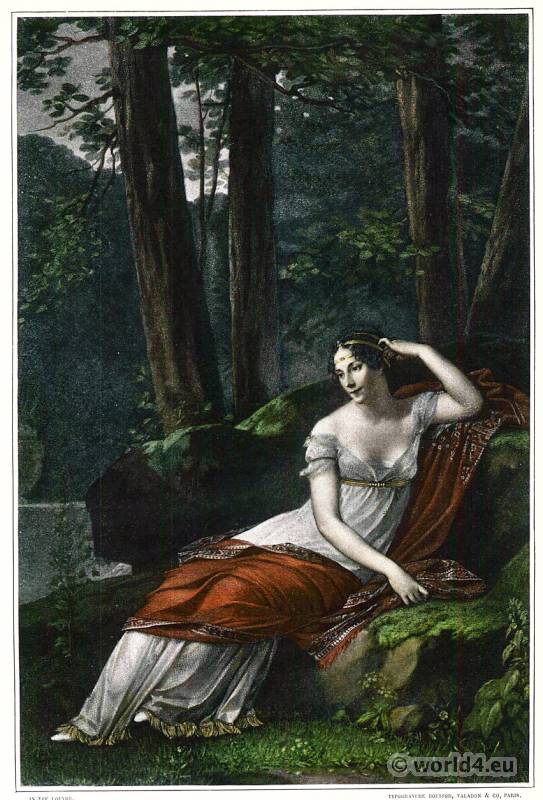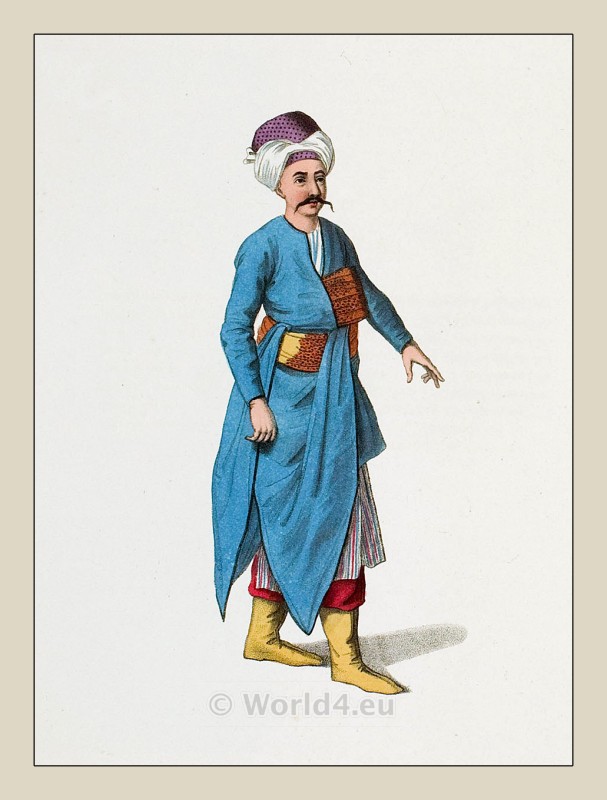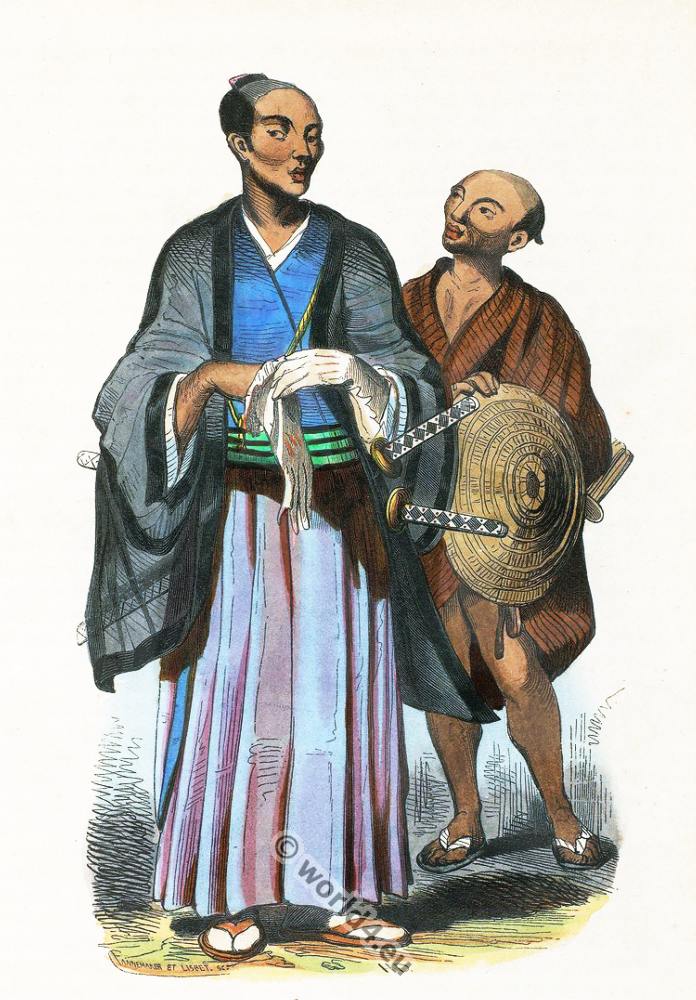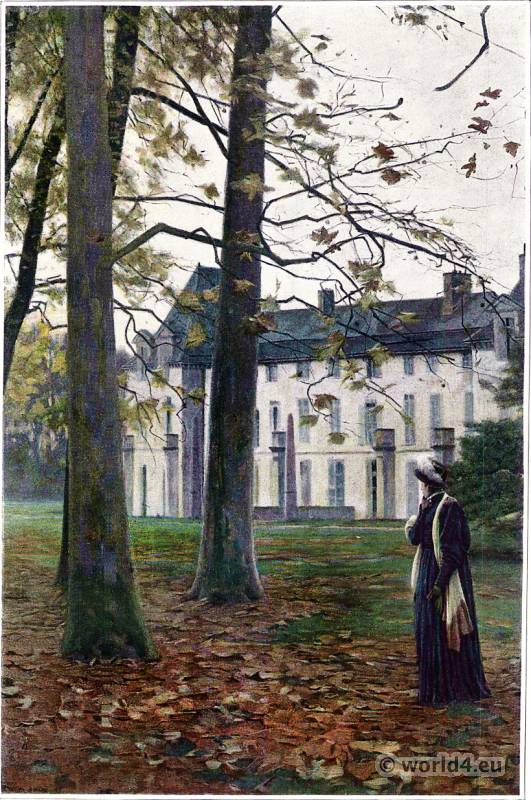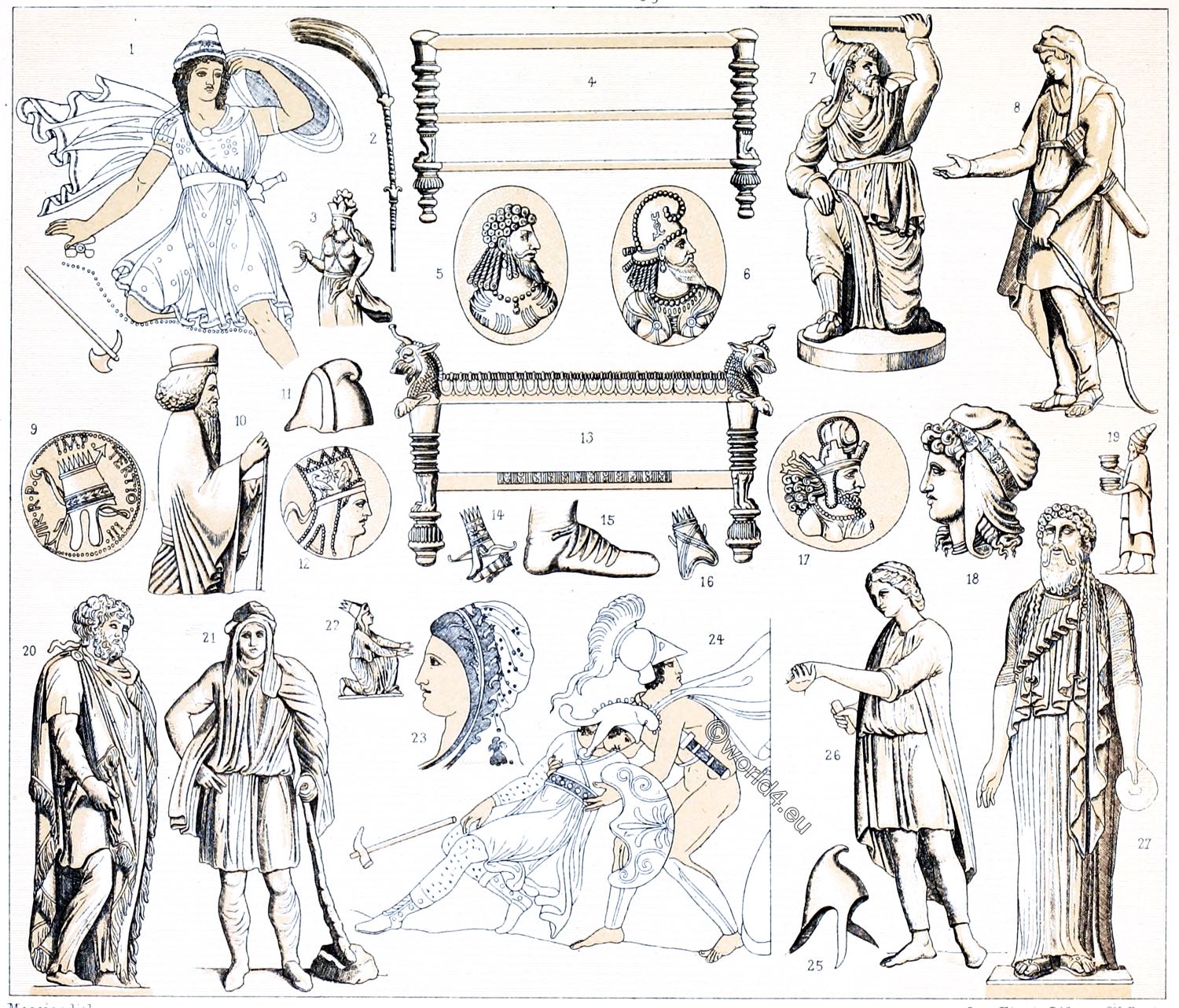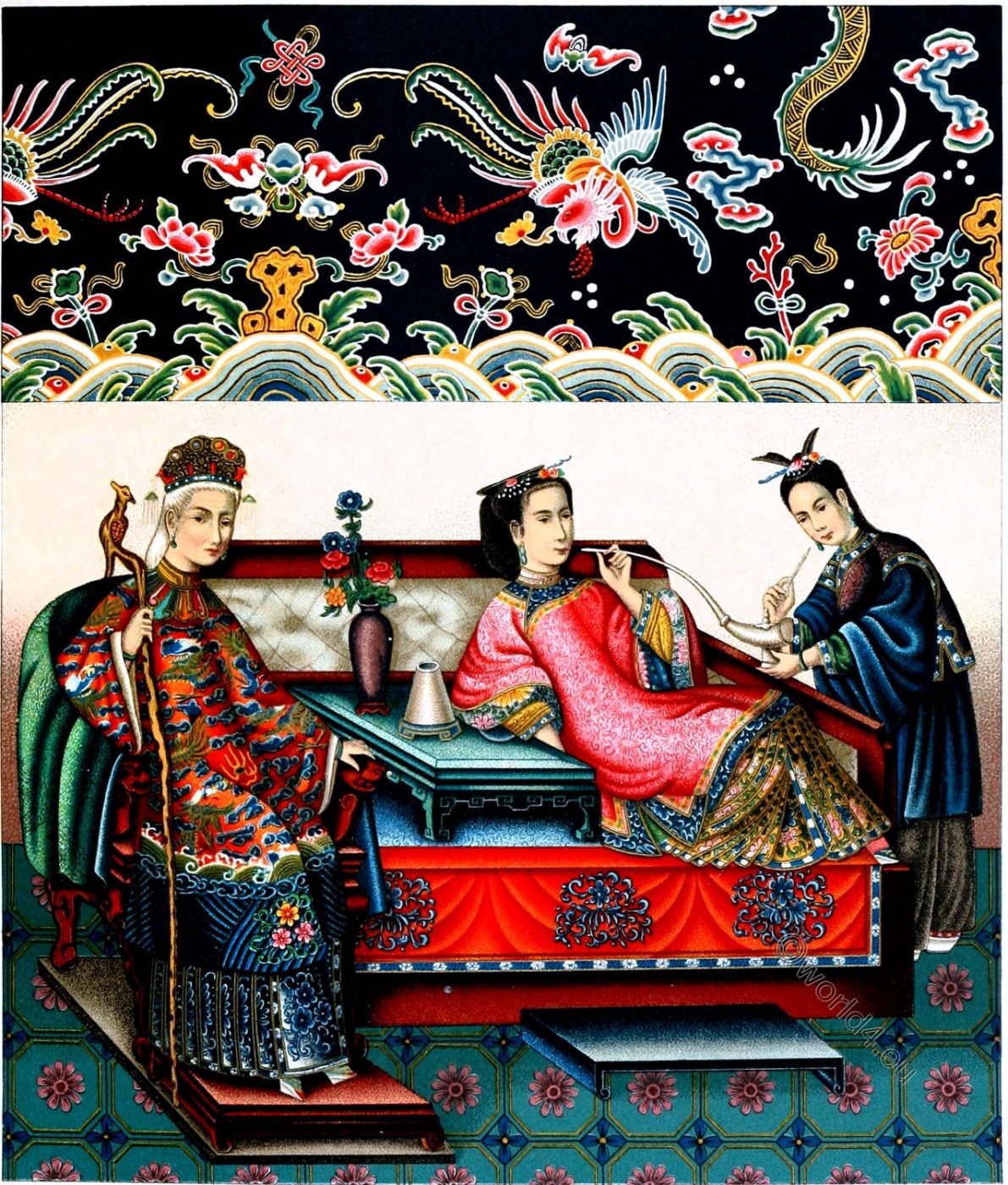
China. The empress and a concubine. Furniture. Embroidery.
No. 1. – Empress in a diadem with long pendants.
She holds the sceptre with the fabulous animal fong. Its haol, undergarment, is made of silk interwoven with gold; above it falls the ma-kuol of red silk embroidered with the five-clawed dragon and the Phoenix; it ends in a striped hem decorated with gold brocade. Her earrings and bracelets Bind of nephrite. The throne with an estrade on which the empress sits is covered in green.
Nos 2 and 3, concubine and servant.
The first three concubines have the title fu-tschin. They are regarded as real wives and bear the title queen. Their dresses are decorated with feathers in the five colours. Nine have the title pin, are considered princesses and wear yellow robes. Thirty-seven, called chi-fu, are dressed in white. Eighty-one, yu- tsi, are concubines of the emperor and dress black.
No. 2 wears the yellow gold embroidered skirt under a shiny coloured overskirt. Her hair, taken according to Chinese fashion, is covered by the cap decorated with pearls and artificial flowers. The hair bulge is pierced by a long needle.
The cap of the servant carries the phoenix, whose wings tower up at the back of the head, as a special ornament. Her costume consists of a short sleeveless vest over a ma-kual of blue calico; the haol, the long skirt lets green sleeves stand out. In her hand she holds the needle with which the opium ball is inserted into the pipe bowl.
In every room there is the Kan, a kind of bench with back and side rest, 5-6 feet long, 2-3 feet wide; it is divided into two parts by the height of the side rest, kan-thoo, by a small tableehen. One sets on the same a flower vase, the tea service and the pipes.
No. 4. – Piece of a robe; embroidered fabric.
No. 1, 2, 3 according to original paintings in the possession of Mr. Dessollier. No. 4 after a Chinese robe owned by the editor.
Cf. the text: Escayrac de Lauture, Mémoires sur la Chine, 1865 – Girard, France et Chine, 1876.
Source: History of the costume in chronological development by Albert Charles Auguste Racinet. Adapted by Adolf Rosenberg. Berlin 1888.
Related
Discover more from World4 Costume Culture History
Subscribe to get the latest posts sent to your email.

